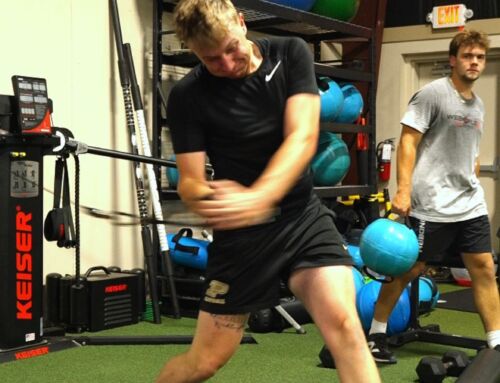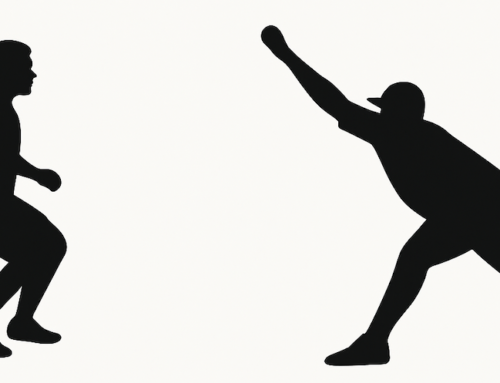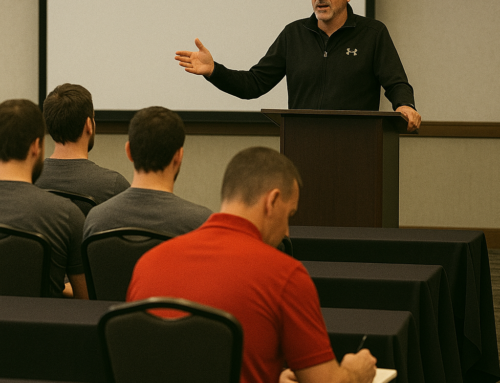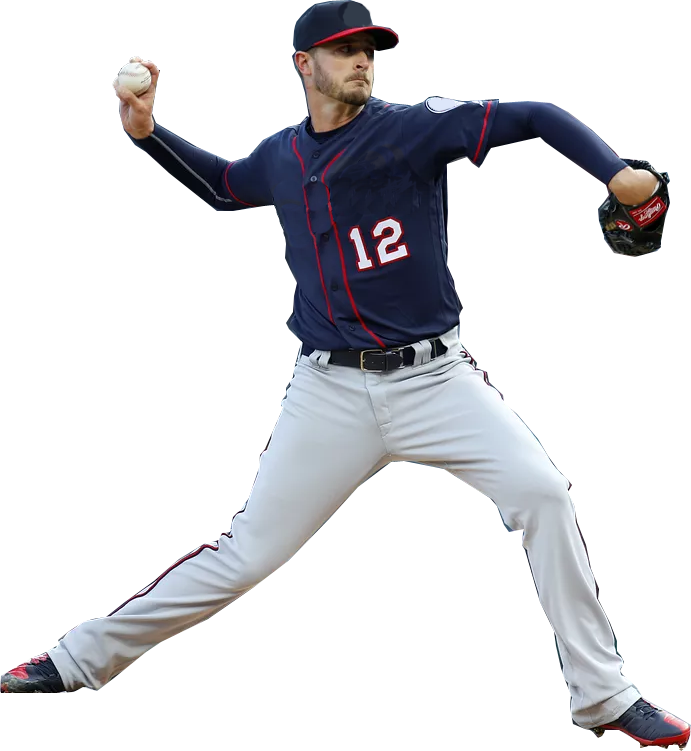
Jake Odorizzi: The Odo Solution
Jake Odorizzi had the best year of his career in 2019 and was rewarded with $17.8 million one-year contract with The Minnesota Twins for the 2020 season.
According to Michael Augustine of FanGraphs, “In 2019, Jake Odorizzi went from being a promising middle of the rotation arm to one of the best starting pitchers in baseball. With a career-best 3.36 FIP and a nearly 5% jump in his strikeout rate, he was able to post the highest WAR (4.3) of his six-plus seasons in the major leagues. His pitching arsenal, spearheaded by improvements to his four-seam fastball, became as effective as it’s ever been and transformed Odorizzi into a front-line starter.”
In 2018, Jake’s four seam fastball sat at 90-92 mph. In 2019 it was 93-95 mph. His swinging strike rate on his four-seamer went from 11.6% to 14.9%. Again quoting Augustine, “Like his four-seamer, the splitter drew a higher swinging strike rate, and he threw it in the zone a bit less because he was able to draw strikes with his fastball at a better rate this year. While he didn’t create more chases on the pitch, when hitters did swing, they were much less likely to make contact.
Yes, Jake Odorizzi had a great year.
And we were not surprised.
You see, Jake made a decision in the winter of 2018. He knew he had just finished arguably the worst year of his baseball career, and he wanted to do something about it.
He spoke to his friend, Kyle Gibson who had worked with us in 2016 and 2017 and decided to reach out to us.
Jake trained with us for more than 3 months and according to an interview he did on MLB Network, the he credits the work he did at The ARMory for his success.
Here’s the complete interview on MLB Network Interview. *Thanks for the shout out, Jake.*
With Jake’s permission, I would like to share a glimpse into a piece of his training process that was probably the biggest difference maker in his preparation the 2019 season.
Jake came in for his initial evaluation the day before halloween. On the first day, we took him through the process we use with every ARMory student. We conducted a thorough interview to ascertain his medical history, his performance record, his training history, and to get a feel for what he thought might be lacking in his game.
We looked at video from when he was successful and compared it to his 2018 season. There were some notable differences.
During his medical history interview, Jake casually mentioned that in 2017, he had strained his back deadlifting and for most of the season, he had struggled with intermittent back spasms and tightness. He said he was able to “pitch through it without too much trouble.” After the season he had gone through a ton of physical therapy that involved lumbar stabilization exercises like dead bugs, planks, and bird dogs. The therapy seemed to work and, went through the 2018 season pain-free. At the time I didn’t consider a two-year-old relatively minor and subsequently healed injury to be of much significance.
That was almost a big mistake.
As far as his goals for off-season training, Jake told us that he’d like to have a 2-3 mph uptick in velo, but that his biggest problem in 2018 was his command. Walks had never been a big problem for Jake, but during the 2018 season, he had some issues. He said he had a hard time getting his pitches to the glove side. He left a lot of pitches up toward his arm side, he had lost some of the depth on his splitter, and his breaking pitches had flattened.
Jake’s physical assessment was relatively unremarkable. He had been a highly coveted wide receiver in high school before being selected in the first round of the 2008 MLB draft by the Milwaukee Brewers. He had not lost that athleticism so his shoulder, trunk, hip and ankle mobility were all adequate. Off the mound, Jake was a very good mover. On the mound … that was a different story.
We conducted a high-speed video analysis of Jake’s pitching movement pattern to clearly define the stability of each the following eight mechanical indicators.
We noticed that Jake used a traditional “up down and out” approach as he moved down the mound. When he lowered his leg after his lift, his pelvis flattened and he drifted toward home plate. The weight on his back leg shifted mainly to the ball of his foot, with very little engagement of his back glute. His arm action was a long and his glove side mirrored it. Early in his forward move, he got into what I call “the starfish position” — lead leg fully extended, glove fully extended, throwing arm straight, behind him and pointing toward second base.
Jake, a right-hand pitcher, landed with his lead leg to the left of the midline and turned slightly toward the first base dugout. At landing, his torso had opened and his chest was facing the hitter. Interestingly, when we looked at 2016 and 2015 video, he tended to land across his body, pelvis facing the hitter, but chest and shoulders closed.
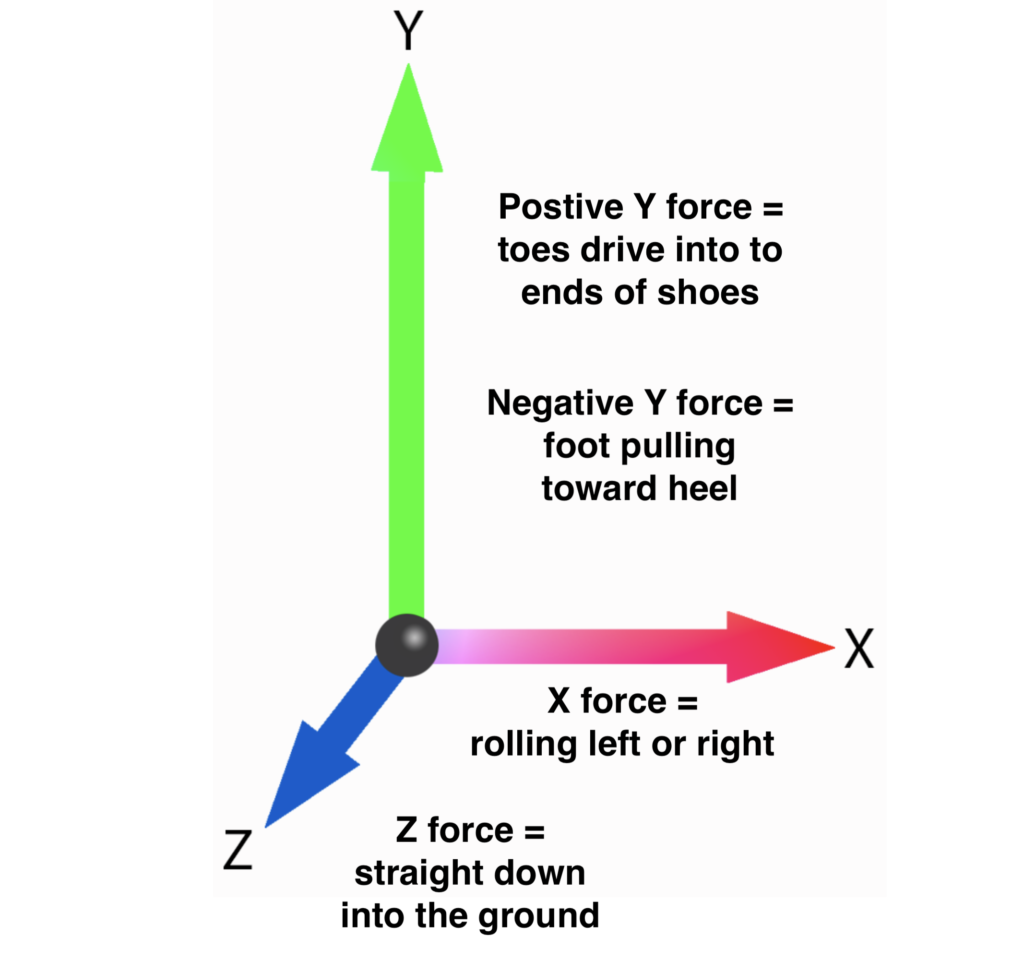
In 2018, however, he was unable to achieve separation between his upper and lower half. Instead, he rotated like a pinball flipper, hips and shoulders turning as one unit. This resulted in forearm play – mis-timed external rotation of the shoulder (slightly before lead leg weight bearing foot plant). His lead leg landed with his toes driving into the ends of his shoes (negative Y force) then rolling to the outside of his left foot (X force).
Instead of bracing firmly and pulling rearward (negative Y force) to facilitate back hip rotation, his front knee leaked forward and wobbled laterally. His glove side was a little odd as well. As his throwing arm straightened behind him, his glove side elbow straightened and then pulled to the left of his torso as he rotated toward launch.
Jake clearly didn’t like the way things looked. He had recognized most to the disconnections during the season and had been trying in earnest to correct them. So far, his current approach to changing his mechanics had failed.
Nonetheless, I was encouraged. There was certainly a lot of fertile ground to work with here.
After the evaluation was complete, we reviewed all of the data and together, Jake and I wrote out his training plan.
We started with the day he would need to report to Spring Training and backed up 16 weeks. That would give us time to correct his inefficiencies, enhance his velocity, improve his command, and still have time to work on pitch design and ball movement. Jake’s initial plan would involve a series of throwing drills to address each of the disconnections noted. Meanwhile, he would execute a set of progressive “movement enhancement” exercises to teach him to feel back hip and front leg stability while encouraging a modest hip hinge to engage his back side glutes and lead leg hamstrings. He would continue working with his current strength and conditioning coach for weight training, but he would allow us to take him through our medium specific/medium load “Power Building Workouts.” Arm care and recovery exercises such as the shoulder tube, and Shoulder Sphere were also included.
My initial impulse for the forearm play issue was to use the TAP Baseball ARMory Connector Club® to facilitate better feel and timing of his arm action. We’ve had a lot of success with The Club, but after 3-4 throws, we abandoned that idea for Jake. I wasn’t sure why, but as I watched him throw the Club … It just didn’t look right. Jake seemed relieved about that.
Instead, we decided to influence Jake’s arm action with up-tempo drills and a drill called “dangles”, which would encourage a less intentional arm. In many cases, when we have a client who isn’t able to optimize the use of his lower half, he begins to seek energy elsewhere — this usually results in a disconnection in his arm action. The dangle drill would relax his arm, allowing it to float into position naturally and achieve better timing with his lower half rotation. For about a week, we included a connection ball in his glove side arm (between his biceps and forearm).
We wanted to transfer the source of his intent and energy from his arm to his lower body.
After about three weeks of training, Jake’s arm action was cleaning up and he was beginning to hinge at the hips to engage his back leg. Because bodies typically want to operate in harmony, the glove side had improved along with his arm action. His new hip hinge was allowing him to produce a bit more power from his back leg. However, despite doing drills and exercises to encourage segmental rotation (hips, then shoulders), Jake was still rotating like a boat oar and landing open.
A bit befuddled I began to wonder why Jake wasn’t able to find separation to optimize the length of his abdominal and chest muscles, even though the rest of his movement had been improving steadily.
When you’re trying to change a movement pattern you have to be sure the athlete doesn’t have mobility restrictions that prevent him from moving properly. I had done that in his initial evaluation but just to be sure, we checked his thoracic and hip mobility again. Often, limitations in thoracic rotation or hip internal rotation can prevent an athlete from rotating segmentally.
This was not the case for Jake. He had no such mobility restrictions, so it didn’t appear to be a physical limitation.
Mis-timed or non-segmental trunk rotation can also appear as a “compensatory disconnection” due to a poor first move. If an inefficient first move, such as Jake’s early quad dominance, projects the athlete toward the on-deck circle on his arm side, his body will usually choose some combination of five potential solutions to correct his path: 1) he can open his lead leg independently, 2) he can rotate his torso toward his glove side, 3) he can pull his glove outside the frame of his body, 4) he can tilt his spine toward his glove side, or 5) he can violently yank his head toward his glove side.
I had hoped that improving his back leg stability would change the direction of his load and eliminate the compensatory disconnection. However, since Jake’s lower half was now improved, and his direction was now toward home plate, the lack of separation and early torso rotation couldn’t be explained as a compensatory disconnection. And, as we already established, he didn’t have a mobility limitation.
That left us with only one possibility.
Jake had a motor control problem.
He wasn’t finding proper timing, sequencing, and synergy in his abdominals and chest muscles to enact segmental rotation. I like to think of it as not turning on all the circuit breakers of movement at the right time, or in the right order.
The problem was, I couldn’t figure out why.
Complex organisms aren’t interested in being in the right position or looking good. They are self-preserving and generally lazy. Complex organisms are interested in accomplishing important goals with the least amount of energy expenditure possible. That’s why a cheetah chases the slowest gazelle first. He wants to accomplish the goal of killing and eating his prey, but he doesn’t want to expend a lot of energy doing it.
Separating the pelvis and hips from the torso to take advantage of the elastic properties of the abdominals and chest muscles is the most energy efficient way to transfer energy from the lower half to the arm. Yet, despite all the other improvements, Jake’s body was still choosing the more energy consumptive option of non-segmental rotation.
The question was, “Why, was his body opting to move in such an inefficient manner?”
Then it hit me.
The back pain.
I remembered Jake mentioning that in 2017 he had strained his back deadlifting. He experienced intermittent back pain and tightness all season but “pitched through it.”
Jake is a great athlete and he was still able to compete, but perhaps in a protective reflex, the pain had guided him toward this non-segmental rotation. My theory was that even though the injury had healed, his body was still stuck in protective mode.
Jake’s body wasn’t finding optimal length-tension relationships and enacting the synchronized co-contraction necessary to remove muscle slack at exactly the right time.
Let me explain it a little deeper
Length-tension advantage
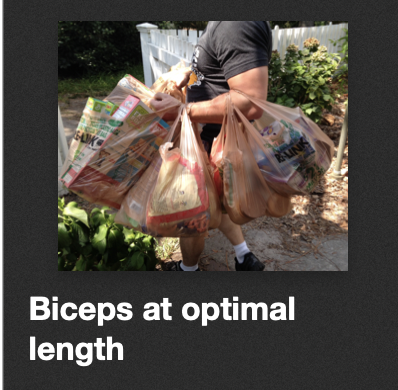
Every muscle or group of muscles has a length at which it is optimally strong. For example, let’s say I’m trying to carry a plastic bag full of groceries. When my elbow is fully straightened, my biceps muscle is weak, because it’s too long. When my elbow is in the most bent position, the muscle is weak because it’s too short. But, in between those two points, there is a position at which it is optimally strong. This position allows me to enjoy the “length-tension advantage” of my biceps while I bring the groceries into my house.
Co-contraction and muscle slack
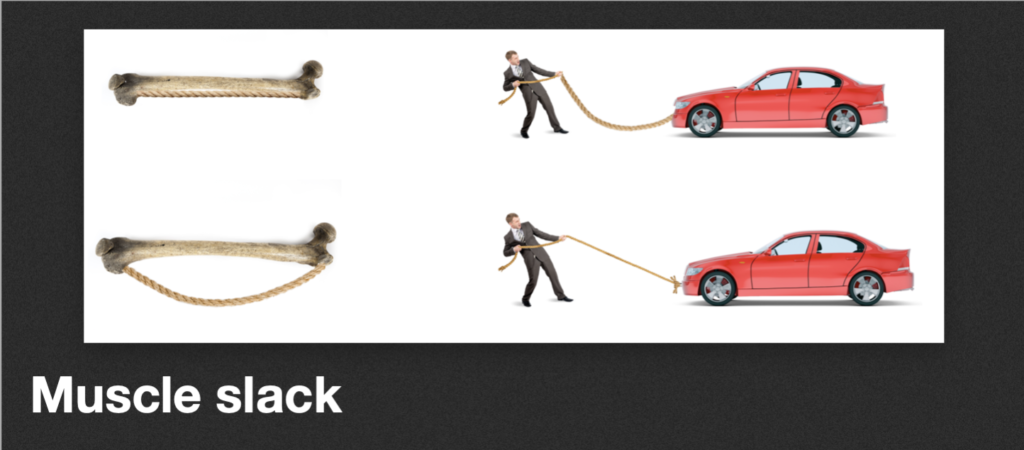
Muscles don’t sit on bones tightened and ready for the immediate force production. Instead, they sag off like the rope hanging in this picture. Just as the car in the image cannot be moved until the slack in the rope is removed, the body cannot produce adequate force or power until the “slack” in the system is removed.
The best way for an athlete to remove muscle slack is through “co-contraction.” That is, isometric tensing of all the muscles in a limb or body part.
The ability to remove muscle slack in a timely and efficient manner while moving dynamically through physical activities is one of the fundamental building blocks of what we commonly refer to as “athleticism.” For more on our definition of athleticism CLICK HERE. (video)
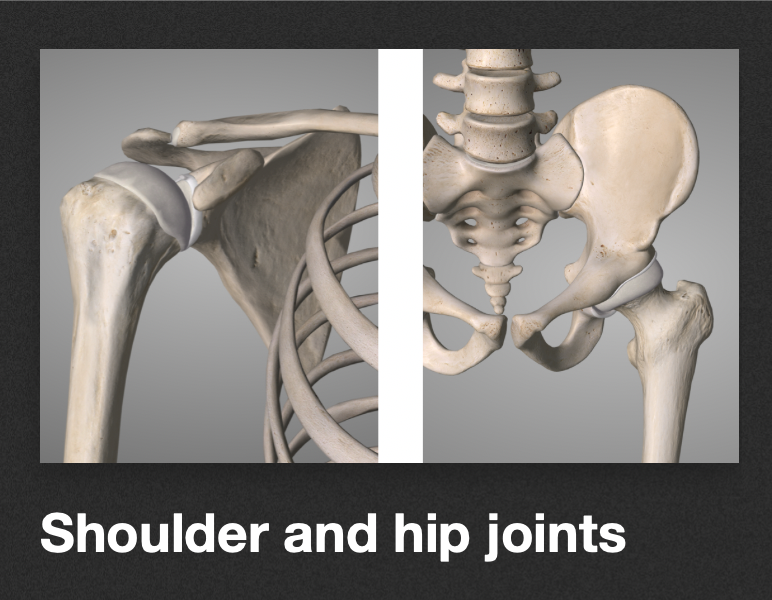
Muscle slack removal is facilitated when joint mobility and motor control qualities allow athletes to accomplish movements that put affected joints in anatomically stable orientations. For example, anatomical stability is achieved when the head of the femur is positioned in the center of the hip socket (acetabulum), or when the head of the humerus is centered on the shallow socket (glenoid fossa) of the shoulder joint.
In Jake’s case, his spinal and abdominal muscles weren’t removing muscle slack in a timely manner, so the vertebrae in his lower back were not being placed in an anatomically stable position. As a result, his central nervous system was subconsciously inhibiting segmental rotation and causing him to rotate like a block —non-segmentally.
My friend, Dr. Stephen Osterer recently turned me on to the scientific term for this phenomenon — Kinesiophobia (the fear of moving).
Even in the 2016 video, when Jake was performing well, his first move as he lifted his leg was to shift to his weight to the ball of the foot. This put his glutes in a disadvantageous position. He didn’t hinge his hips, but instead, kept his back glute directly over his heel. The absence of a hip hinge compromised the length-tension relationship in the glutes and allowed the quads to dominate the move
The quads are linear muscles.
They can’t elicit rotation.
They can only produce a kick or leap.
Because his first move was quad dominant, the direction of Jake’s load, even before the back pain plagued 2017 season, was toward the on-deck circle on his arm side (remember, in 2016, he landed slightly across his body). That can be fine if you have enough mobility and motor control to internally rotate both hips and then rotate your spine to get back on line.
In 2016, Jake had the motor control to do that.
In 2018, he did not.
Because his paraspinal muscles and abdominals were not able to activate on time, Jake couldn’t rotate segmentally. He moved his hips and torso at the same time, causing him to land open with his lead leg and torso.
In physical therapy, lumbar stabilization exercises are a standard choice for the treatment of back pain. Planks, dead bugs, and bird dogs are standard fare for attempting to establish “stability” in the spine.
However, we must always remember:
Stability is not lack of movement, it is control of movement.
When joints are in stable positions, the surrounding muscles are moved into optimal length-tension relationships. This facilitates coordinated co-contraction which removes muscle slack and allows the expression of power.
If muscle slack is not removed, power cannot be expressed.
If muscle slack is not removed coordination and control of movement cannot be attained.
Dynamically removing muscle slack through well-timed co-contraction also provides the control necessary to attenuate stress on at-risk connective tissue.
Jake wasn’t removing muscle slack in his spine, his back wasn’t stable, so his body went into protection mode. He wasn’t turning on the right muscles at the right time and with the right sequencing and synergy to remove muscle slack. As a result, his body wouldn’t allow segmental motion.
The solution was simple.
And it happened quickly.
To make the body feel secure in allowing the pelvis and hips to rotate separately from the spine, you want to encourage a dynamic stability/co-contraction and synergy in the trunk muscles. To achieve this, you have three options:
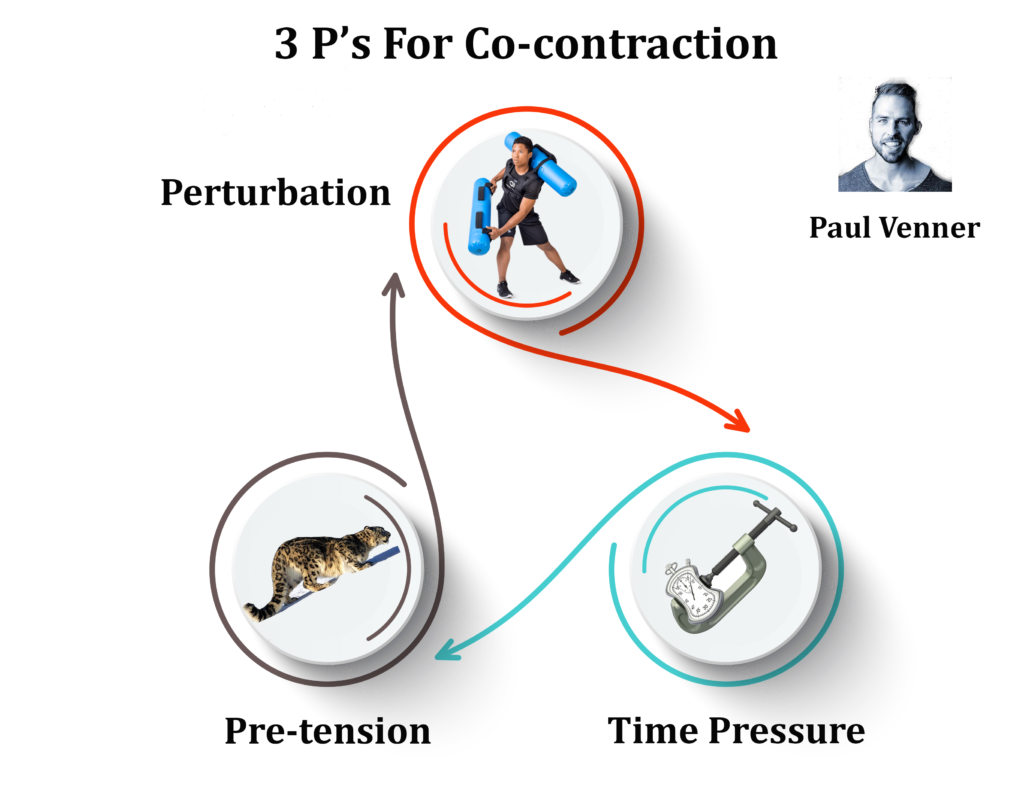
- Pre-tension: Like a lioness preparing to pounce on her prey, the athlete removes slack by tensing the muscles.
- Perturbations: Unpredictable stimulus, unstable loads such as aquaballs or waterboys from Ultimate Instability or Oates Specialties. Manual perturbations using bands or straps, can jostle the athlete’s trunk as he performs functional movements are also good options.
- Compress time through quick switches. Rapid changes of direction force the athlete to find optimal length and co-contraction.
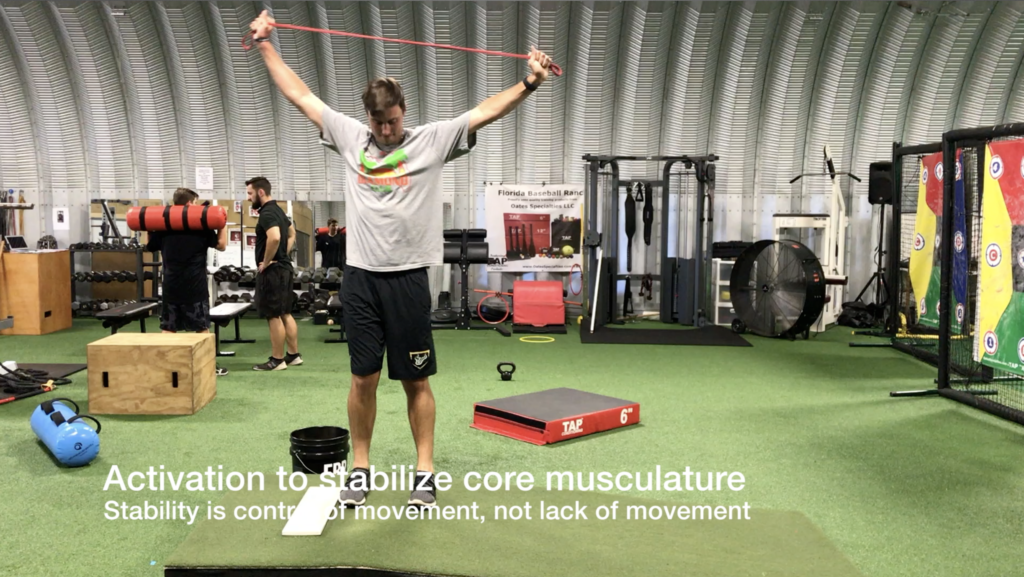
We started by having him learn to feel trunk muscle activation by stretching an elastic band overhead between his hands and then going through a simulated pitching motion.
Then we advanced to more aggressive instability loads adding more and more specificity as he gained control. Note how challenging it is for Jake to find stability in his trunk on some of these exercises.
Literally by the end of the first day of the new training plan, Jake had found it. His old segmental rotation had returned and now that he was more stable on his back leg, his direction was spot on and he was even better than ever. That’s how it works with motor learning solutions. When the switch goes on, they have it. His body wanted to move in this manner. It’s the most efficient way to accomplish the goal. When the pattern is already there, and when they find it. It’s like a light goes off and they have it for good.
Jake’s improved movement pattern enabled us to advance to a velocity enhancement and pitch design to further polish his readiness for the season. The “Odo Solution” was an interesting and challenging puzzle. It wasn’t always smooth sailing, but it was worth the effort.
We couldn’t be happier for Jake. His willingness to move away from the status quo and try something different really paid off for him. It couldn’t have happened to a better guy. As you can probably imagine. Jake isn’t ready to rest on his laurels. Jake is already hard at work at The ARMory, prepping for next year. We’re looking to further refine his movement pattern, maintain or improve his velocity, and sharpen his breaking ball.
By accepting the Twins’ qualifying offer, Jake Odorizzi is essentially betting on himself. If he can put together another good year, he will likely emerge as the top free agent pitcher next year. Here at The ARMory, we’re betting on Jake too. You see, we have the inside scoop. Jake is on the relentless pursuit of excellence. He’s a ARMory Guy. It’s a good bet.
Get started by calling, our CFO/COO Amy, at 866-787-4533.
We’ll see you at The ARMory.
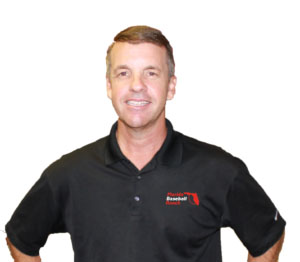
Randy Sullivan, MPT, CSCS CEO, Florida Baseball ARMory


